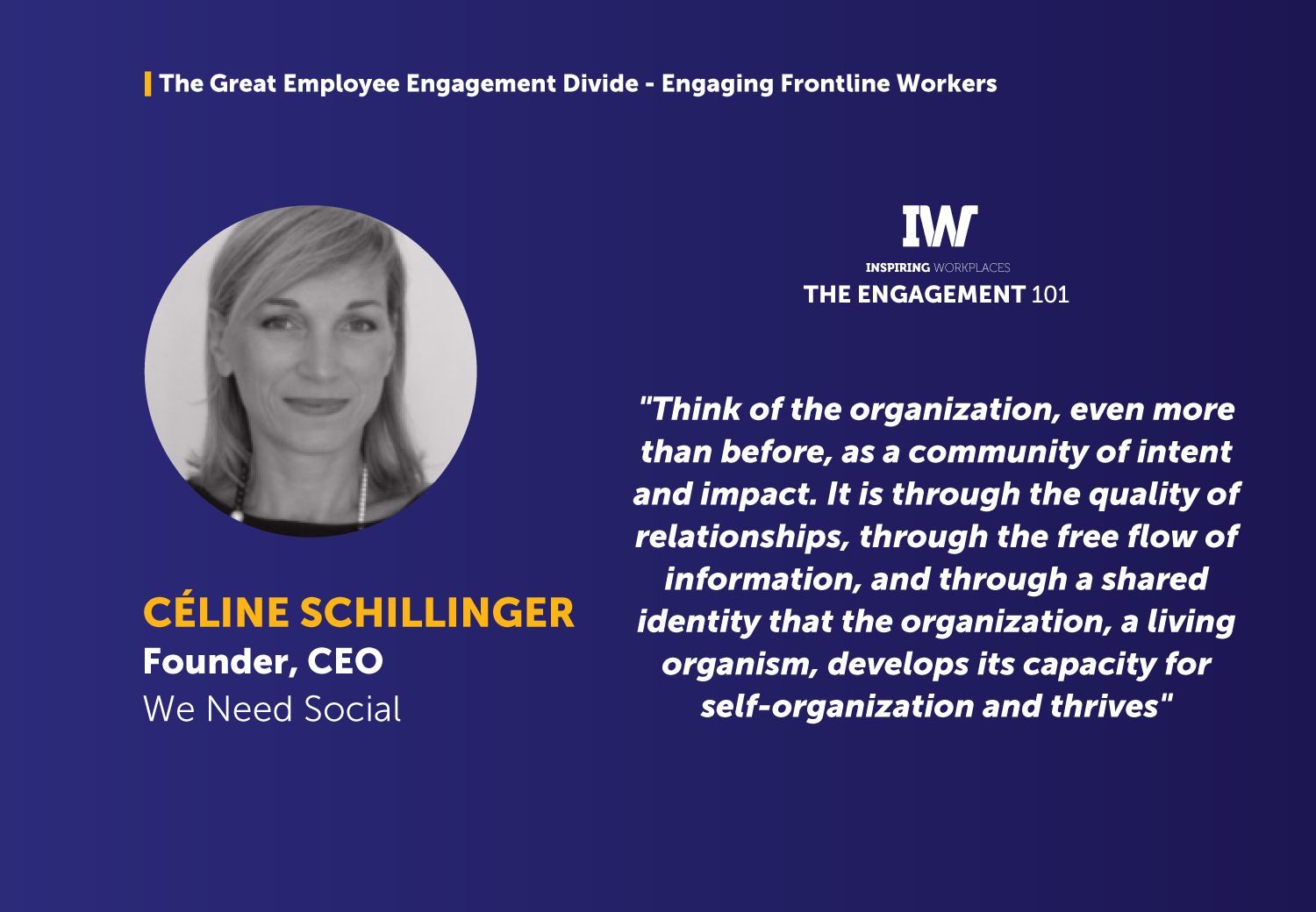
18th November 2021
The Great Employee Engagement Divide – Engaging Frontline Workers – Céline Schillinger

This snippet is part of our Ebook The great Employee Engagement Divide – Engaging Frontline Workers. Advice and suggestions from our Top 101 influencers. You can download the full eBook with all the advice here.
Céline Schillinger, Founder, CEO, We Need Social
Office workers and frontline employees have had for the most part radically different experiences from one another of working under Covid. It hasn’t been easy for anyone to adapt, but where some were innovating a new form of autonomy from home, others were defying the virus to keep essential services running in hospitals, supermarkets and factories. This difference has left its mark, and added a further division in organizations that are not short of them. How can we find, or regain, the cohesion that is so necessary to ensure quality operations, optimal customer service, innovation and engagement? Several experiences in the field of large-scale change through the mobilization of all and the use of digital technology, first in a company and then as a consultant, have made me explore and reflect on this question. I’m about to turn it into a book: Dare to un-Lead. The Art of Relational Leadership in a Fragmented World, to be released in spring 2022.
- Make sense together of what happened, listen to and acknowledge everyone’s experience – through events, digital conversations, or else. Make it a regular habit.
- Mix employees from diverse populations in working groups. Better not to appoint them, but leverage the dynamics of activism and volunteerism whenever possible (and it is largely possible)
- Think of the organization, even more than before, as a community of intent and impact. It is through the quality of relationships, through the free flow of information, and through a shared identity that the organization, a living organism, develops its capacity for self-organization and thrives. This is why it has become essential to support the development of relational leadership.
The good news is that none of this is really difficult. It just starts by changing the patterns of interaction – which often means changing oneself first. What are we doing about it?

